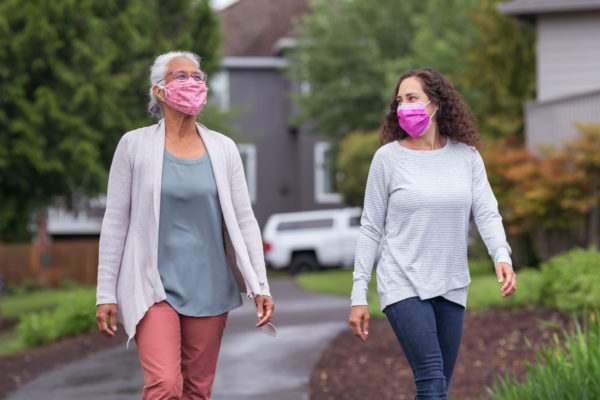
Whether you’re a student athlete or active adult who recently recovered from Covid-19, you’re likely itching to resume your exercise routine. So how can we know when it’s safe to exercise after Covid?
Many long-term effects are still unknown
While we certainly know more now than we did a year ago, we’ve also learned that Covid impacts each person differently. While some people experience no lasting symptoms at all, some may experience what is referred to as “Long Covid”, battling long-term issues like fatigue and shortness of breath.
Anyone, including young athletes, can experience a severe case or have long-term damage. In fact, some people may do just fine and be able to jump back into their exercise regimen, while others may struggle to get their performance levels back.
Note: “Long Covid” is defined as the presence of signs and symptoms that develop during or following Covid and persists for 12 weeks or more. Should this be your case, consult your healthcare provider before starting any type of exercise program.
Timeline for returning to exercise
Ultimately, each person’s timeline comes down to the type and severity of their case.
Following the 10-day isolation period after a positive test, those with milder symptoms may consider a slow and steady return to physical activity (as long as they are symptom-free).
In the case of moderate or severe cases, it is recommended that the person be seen by a healthcare provider before any type of exercise.
Red flag symptoms
As you get back in the swing of things, there is a chance that you will experience some setbacks. If you experience any of the symptoms below, stop exercising immediately:
- Chest pain or heart palpitations.
- Nausea and headaches.
- Lightheadedness or dizziness.
- Shortness of breath or difficulty catching breath.
- Unusual and rapid breathing.
- Tunnel vision or loss of vision.
According to the CDC, athletes should rest for 24 hours following these symptoms. You may continue to progress after the 24 hours if you are feeling well. However, if your symptoms persist, it is recommended that you follow up with your healthcare provider.
3 Tips for easing back into fitness:
- Listen to your body. If you’re experiencing any of the symptoms above, STOP. Keep monitoring your condition and talk to your provider.
- Take it easy. Don’t try to power through or make up for lost time. You will need time to build up your endurance and the intensity of your workouts.
- Be patient. Don’t push too hard while your body is still trying to recover. Be patient and allow yourself time to fully recover, regardless of your pre-Covid fitness levels.
Feel free to contact us if you’ve had Covid-19 and are unsure whether your body is ready for exercise.
Our Therapists and Certified Athletic Trainers can take you through in-depth movement analysis screens to help identify any areas of weakness that could lead to injury.









